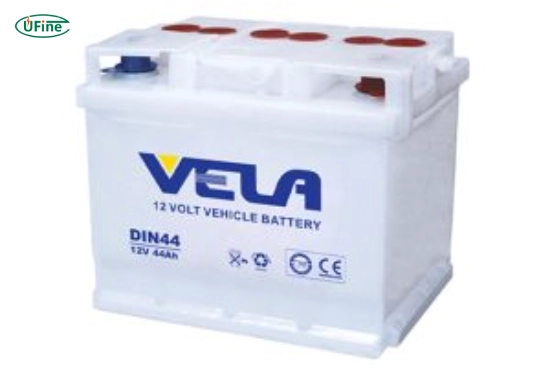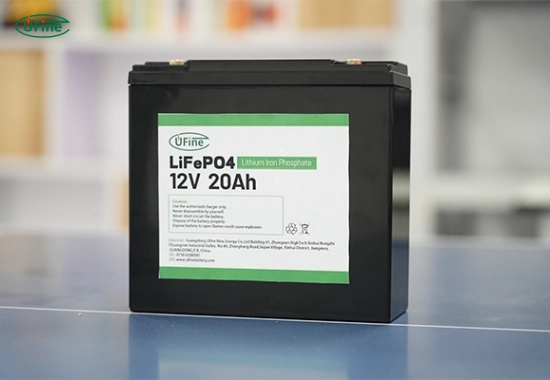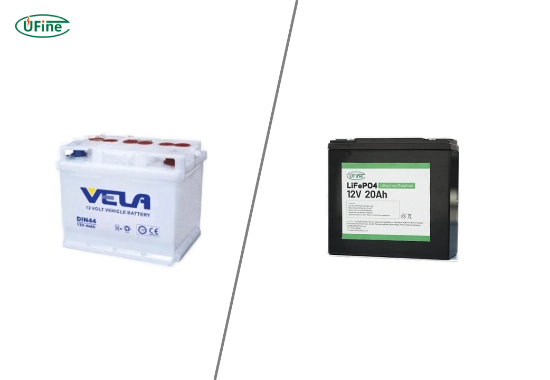Can you replace a VRLA battery with lithium? Yes, you can, and doing so might be one of the smartest upgrades you can make for better energy performance and battery life. Switching to lithium may offer significant advantages if you’ve used a VRLA battery in your RV, solar system, or backup power setup. But before you make the change, there are some essential things you need to understand.
In this guide, we’ll discuss the differences between VRLA and lithium batteries, the pros and cons of switching, and what you need to consider for a safe and efficient replacement. Let’s get started.
Part 1. What is a VRLA battery?
A VRLA battery (Valve-Regulated Lead-Acid battery) is a sealed lead-acid battery widely used in backup power systems, UPS, and off-grid setups. These are also sealed batteries because they don’t require regular water refilling.
There are two main types of VRLA batteries:
- AGM (Absorbent Glass Mat): Uses glass mat separators to hold the electrolyte.
- Gel: Uses silica to turn the electrolyte into a gel.
Both types are low-maintenance, spill-proof, and can operate in various positions.
Part 2. What is a lithium battery?
A lithium battery is rechargeable and uses lithium iron phosphate (LiFePO4) as its core chemistry. These batteries are known for:
- Lightweight design
- Long cycle life
- Fast charging
- Deep discharge capabilities
They are becoming more common in solar power systems, RVs, boats, and home energy storage.
Part 3. Can you directly replace a VRLA battery with lithium?
You can replace a VRLA battery with lithium, but it’s not always a simple plug-and-play swap. Here’s what you need to keep in mind:
- Voltage compatibility: Most 12V lithium batteries are designed to match the voltage of VRLA batteries.
- Charging systems: You may need to adjust or upgrade your charger to ensure it’s compatible with lithium charging profiles.
- Battery management system (BMS): Lithium batteries have a built-in BMS for safety, but your existing system must support it.
- Space and mounting: Lithium batteries are more compact so that installation may require adjustments.
Part 4. Why would you want to replace a VRLA battery with lithium?
Here are some key reasons why people switch from VRLA to lithium:
- Longer lifespan: VRLA batteries typically last 300–500 cycles, while lithium can exceed 3000 cycles.
- Lighter weight: Lithium batteries can weigh up to 70% less.
- Faster charging: Lithium accepts a higher charge rate.
- Deeper discharge: Lithium batteries can be discharged up to 80–90% without damage.
- Low maintenance: No need to top up or check water levels.
In short, lithium batteries offer higher performance and better value over time.
Part 5. What are the downsides of switching to lithium?
While lithium batteries have many benefits, there are some significant drawbacks to consider:
- Higher upfront cost: Lithium batteries are more expensive than VRLA.
- Charger compatibility: Some older chargers may damage lithium batteries.
- Cold weather performance: Lithium batteries don’t charge below 0°C (32°F).
- System upgrades: You might need to install a new charge controller or inverter.
So, the switch is worth it — but only if your system is ready.
Part 6. Do you need a special charger for lithium batteries?
Yes, most lithium batteries require a charger with a lithium-specific charging profile. Using the wrong charger can shorten the battery’s life or even damage it.
Look for a charger that supports:
- Constant current/constant voltage (CC/CV)
- Lithium charging algorithms
- Overcharge protection
If unsure, check with the battery manufacturer or invest in a smart charger that auto-detects battery type.
Part 7. How do lithium and VRLA batteries compare?
Let’s take a clear look at how VRLA (Valve-Regulated Lead-Acid) batteries compare with Lithium (LiFePO₄) batteries in key performance areas:
| Feature | VRLA Battery | Lithium (LiFePO₄) Battery |
|---|---|---|
| Weight | Heavy – ~30–70 kg for 100Ah | Lightweight – ~10–15 kg for 100Ah |
| Lifespan | 300–500 cycles (~2–5 years) | 2000–5000 cycles (~10–15 years) |
| Depth of Discharge | ~50% recommended | Up to 80–90% |
| Maintenance | Low (but regular checks recommended) | Virtually none |
| Charging Time | 6–12 hours | 2–4 hours |
| Operating Temperature | 0°C to 40°C optimal | –20°C to 60°C (with BMS) |
| Efficiency | 70–80% | 95–98% |
| Cost | Low upfront ($100–200 for 100Ah) | Higher upfront ($400–800 for 100Ah) |
| Long-Term Cost | Higher due to shorter life | Lower due to longer lifespan |
✅ Conclusion:
Lithium batteries outperform VRLA in nearly every category—longer lifespan, faster charging, deeper discharge, lighter weight, and better efficiency. The only drawback is the higher initial cost, but they save more over time with fewer replacements and minimal maintenance.
Part 8. Can lithium batteries be used in the same system as VRLA?
Mixing lithium and VRLA batteries is not recommended. They have different:
- Charging voltages
- Discharge rates
- Internal resistance
Combining them can lead to uneven charging, reduced battery life, and potential system damage.
If you decide to upgrade to lithium, replace the entire battery bank.
Part 9. What other components might need upgrading?
When switching to lithium, you may need to upgrade the following:
- Charge controller: Must support lithium charging curves.
- Inverter: Some inverters are not optimized for lithium discharge rates.
- Battery cables and fuses: Higher discharge capacity may need larger gauge wires.
- Monitoring system: Smart lithium batteries often include Bluetooth or app-based monitoring.
Make a checklist before installing your lithium battery.
Part 10. How do you safely install a lithium battery?
Follow these steps to install a lithium battery safely:
- Disconnect power to avoid electrical shock.
- Remove the old VRLA battery and inspect the wires.
- Install the lithium battery securely in the correct position.
- Connect terminals (positive first, then negative).
- Check charger settings to match lithium battery specs.
- Power on the system and monitor voltage and current.
Always follow the manufacturer’s installation guide.
Part 11. FAQs about VRLA battery vs lithium
Can I use a lithium battery with my existing solar panel setup?
Yes, but you’ll need a lithium-compatible charge controller to avoid overcharging.
Is it safe to leave a lithium battery in my RV all year?
Lithium batteries are safe for long-term storage but are stored at 40–60% charge to preserve lifespan.
Will lithium batteries catch fire?
Modern lithium batteries, especially LiFePO4, are highly stable and have built-in safety features. Fires are infrequent.
Do lithium batteries work in cold weather?
They can discharge in cold weather, but charging below freezing can be harmful. If needed, use a battery heater.
How long does a lithium battery last compared to VRLA?
Lithium batteries can last 10 years or more, while VRLA batteries often need replacing every 2–5 years.
Related Tags:
More Articles

The Ultimate Guide to Choosing the Right Ice Fishing Battery for Your Setup
Find the best ice fishing battery for your gear with this guide. Learn types, sizes, and tips to keep your setup running strong all winter.
Why Lithium Is the Best Battery for Ice Fishing: 7 Scientific Reasons
Lithium batteries excel in ice fishing with superior cold performance, longer life, and lighter weight with seven science-backed reasons explained.
How to Choose the Best Lithium Watch Battery for Your Timepiece?
Learn how to choose the best lithium watch battery to boost performance, ensure safety, and extend the life of your analog or digital timepiece.
Step-by-Step: Integrating a Micro LiPo Battery into Your DIY IoT Project
Power your smart IoT device with a micro LiPo battery. Learn how to connect, charge, and use it safely in this hands-on DIY guide.
Best Use Cases for 12V High Ah Lithium Batteries: From RVs to Telecom Backup
Discover the best uses for 12V high Ah lithium batteries—perfect for RVs, solar, marine, and telecom backup power in 2025 and beyond.






